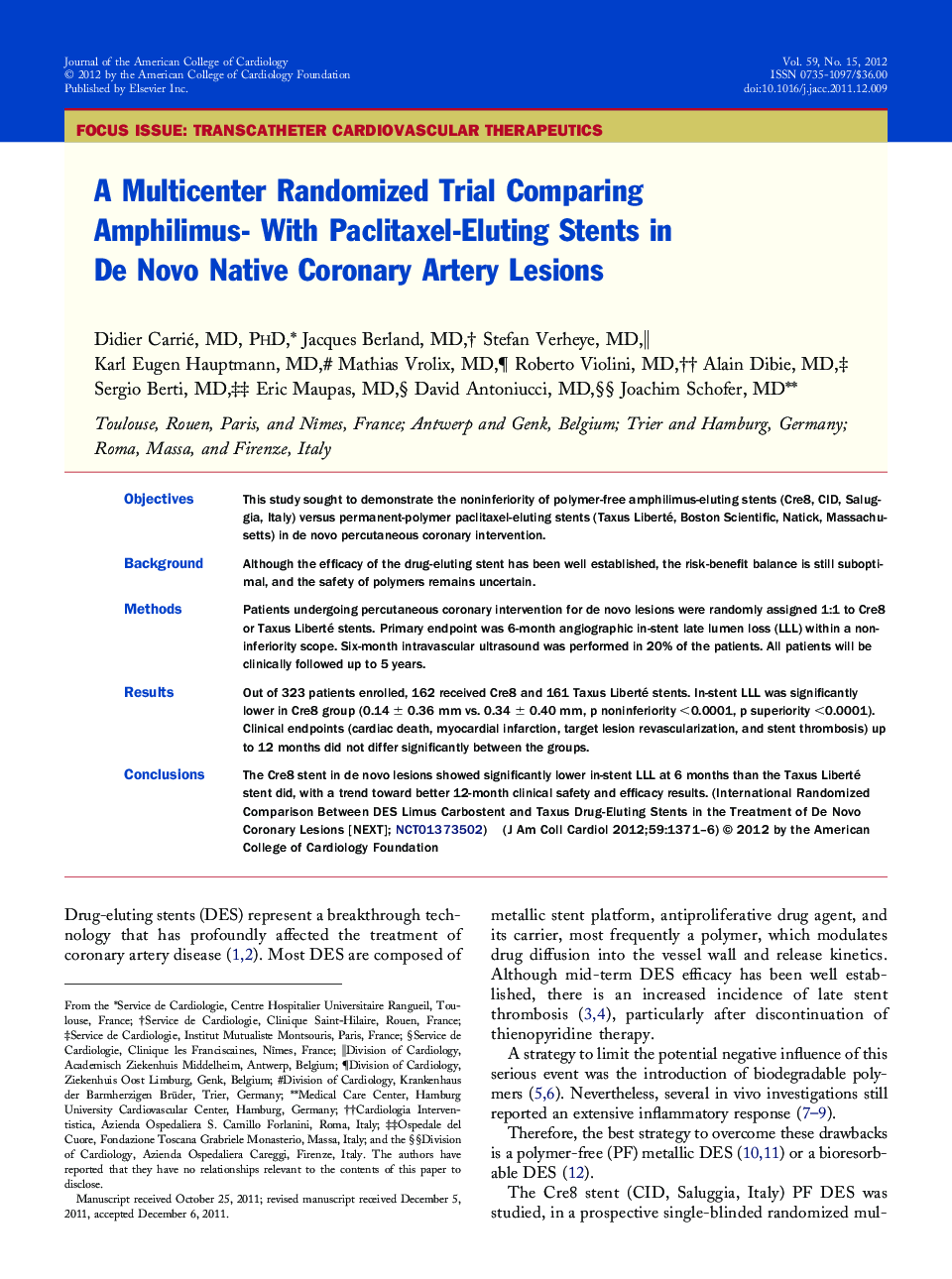| کد مقاله | کد نشریه | سال انتشار | مقاله انگلیسی | نسخه تمام متن |
|---|---|---|---|---|
| 5983381 | 1577216 | 2012 | 6 صفحه PDF | دانلود رایگان |

ObjectivesThis study sought to demonstrate the noninferiority of polymer-free amphilimus-eluting stents (Cre8, CID, Saluggia, Italy) versus permanent-polymer paclitaxel-eluting stents (Taxus Liberté, Boston Scientific, Natick, Massachusetts) in de novo percutaneous coronary intervention.BackgroundAlthough the efficacy of the drug-eluting stent has been well established, the risk-benefit balance is still suboptimal, and the safety of polymers remains uncertain.MethodsPatients undergoing percutaneous coronary intervention for de novo lesions were randomly assigned 1:1 to Cre8 or Taxus Liberté stents. Primary endpoint was 6-month angiographic in-stent late lumen loss (LLL) within a noninferiority scope. Six-month intravascular ultrasound was performed in 20% of the patients. All patients will be clinically followed up to 5 years.ResultsOut of 323 patients enrolled, 162 received Cre8 and 161 Taxus Liberté stents. In-stent LLL was significantly lower in Cre8 group (0.14 ± 0.36 mm vs. 0.34 ± 0.40 mm, p noninferiority <0.0001, p superiority <0.0001). Clinical endpoints (cardiac death, myocardial infarction, target lesion revascularization, and stent thrombosis) up to 12 months did not differ significantly between the groups.ConclusionsThe Cre8 stent in de novo lesions showed significantly lower in-stent LLL at 6 months than the Taxus Liberté stent did, with a trend toward better 12-month clinical safety and efficacy results. (International Randomized Comparison Between DES Limus Carbostent and Taxus Drug-Eluting Stents in the Treatment of De Novo Coronary Lesions [NEXT]; NCT01373502)
Journal: Journal of the American College of Cardiology - Volume 59, Issue 15, 10 April 2012, Pages 1371-1376